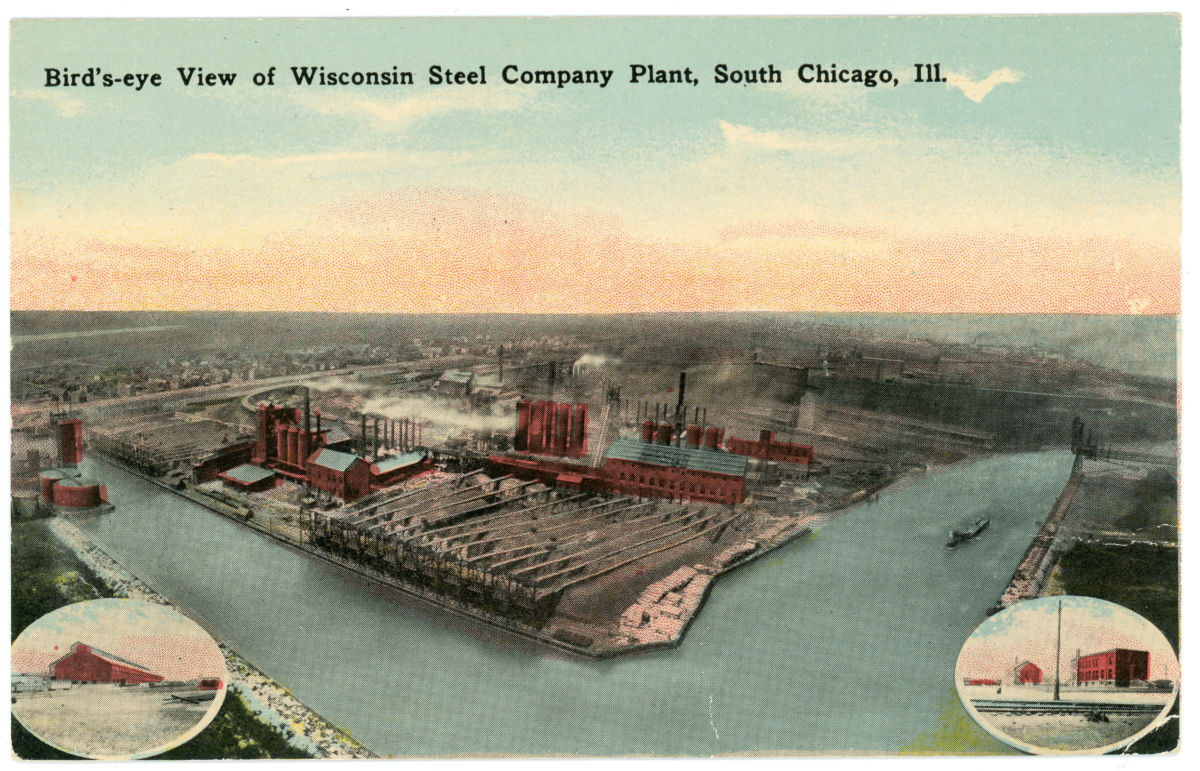Originally referred to as Irondale, South Deering is the largest community area in Chicago. Like many of the south areas industry was the driving factor to bring this community together. In 1875 the Joseph H. Brown Iron and Steel Company located here. They were purchased by International Harvester in 1902, who later merged with Wisconsin Steel and in 1986 the holding company Navistar was created as the successor to International Harvister. Navistar is still one of the largest manufacturers of class 4 to 8 trucks and busses in the United States. Other notable manufacturers that operated out of South Deering include Gold Medal Flour, Illinois Slag and Ballast Company, and the Federal Furnace Company.
Although South Deering was settled by factory workers from Europe only about 20% of the land is residential. 80% is industrial, wetlands, and parks, including Lake Calumet, which is just west of Big Marsh Park. Big Marsh Park used to be a dumping ground for waste and slag from the nearby factories. In 2011 the Chicago Park District acquired the nearly 300 acres of land and opened it as a park in 2016. Due to the pollution plants have a hard time growing in large areas of the park. The park district used that as an opportunity to create eco-recreation areas for activities like hiking, off-road biking, and adventure courses. The trails are “capped” with clay to protect people from the pollution of the former dumping ground. Other areas of the park are being developed to protect the natural habitat and provide spaces for passive recreation.
In 1938 due to a housing crisis the Chicago Housing Authority built a public housing community called Trumbull Park Homes. The Jeffery Manor homes were constructed between 1947-49 for returning WWII vets. The residential neighborhoods were predominantly Jewish. While the community allowed for black people to work at the nearby factories they did not want them living in the area.
Betty Howard, a very light skinned black woman, interviewed for housing at the CHA office in 1953. Being mistaken for a white woman her family was granted housing in the community. They moved in on July 30. White residents promptly protested their new neighbors and tried to force them out of the projects. By August 5 their apartment was attacked by nearly 50 white teenagers with stones and bricks. By August 9 the mob of protestors swelled to one to two thousand people! The family was attacked with violence such as rocks and fireworks. The CHA managed to evict some of the white families who were attacking the Howards and moved in 10 more black families. However, as the debate got heavily underway of whether black families should have the right to move in the police were tasked with keeping humiliating logs of the movement of black residents and even escorted them in and out of the neighborhood, often in a paddy wagon. This is a link to the front page of the Daily Calumet evening edition from August 29, 1953. The Howard family was evicted in 1954 when it was found that Betty was untruthful about her employment on her application. Although the Howards were moved out, a full on riot was avoided, and other black families moved into the neighborhood racial tensions continued through the decade. It wasn’t until 1963 when black residents could openly use a public park in the neighborhood without police protection.
Around this time the Wisconsin Steel plant employed nearly 20% of the neighborhood. Following financial trouble in the late ‘60s it was sold to Envirodyne. Unable to properly operate the plant Envirodyne caused more financial problems and the plant closed in 1980. Meanwhile, the 1970s brought rise to gang violence in the area, as was often seen in neighborhoods with strong racial discrimination.
Between the 1980s and 90s the former steel workers moved out of the neighborhood and gang violence grew among the African Americans and Mexicans who now made up the majority of citizens, 60% to 30% respectively by the year 2000.
Today residents are still living with the aftermath of the steel mill closing and pollution. Closing the mills not only caused job loses and lower incomes, large areas of the earth are irreparably damaged from the steel mills and slag dumps and even today nearby factories continue to pollute the air causing burning sour odors and rotten odors. While there are numerous articles and books about the South Deering area many accounts are short and don’t always capture the whole picture. I know this one doesn’t. Perhaps with more awareness of the full history of the area the community can be more supported from an environmental and social standpoint.
Located in nearby Pullman, the Method Manufacturing Company could be a good case study for the possible future of industry in South Deering. Method is known for its environmentally friendly cleaning products and its LEED Platinum certified factory illustrates their commitment to healthy living. The roof of the factory houses a farm run by Gotham Greens which grows fresh produce for local distribution. Additionally, Method makes it a point to hire from within the community of Pullman.
This type of equitable development could help the community of South Deering both socially and environmentally. It could also be a catalyst for more amenities such as transportation, affordable housing, enjoyment of nature, and accessibility for all.
http://www.encyclopedia.chicagohistory.org/pages/1171.html
https://www.chicagoriver.org/about-the-river/inside-out-around/story-6-big-marsh-park
https://www.youtube.com/watch?app=desktop&v=uyzF08JxsTU
https://www.chicagoganghistory.com/neighborhood/south-deering/
https://daily.jstor.org/how-trumbull-park-exposed-the-brutal-legacy-of-segregation/
https://encyclopedia.chicagohistory.org/pages/2461.html
https://greatcities.uic.edu/wp-content/uploads/2019/05/CalumetRiverCommunitiesPlan_Web.pdf


 Facebook
Facebook
 X
X
 Pinterest
Pinterest
 Copy Link
Copy Link
